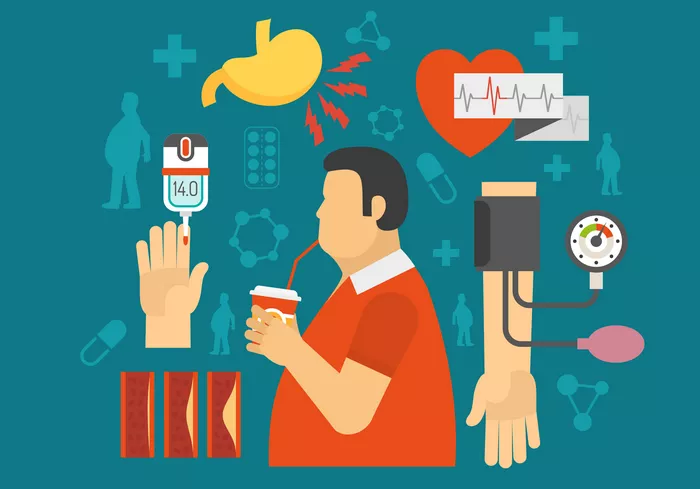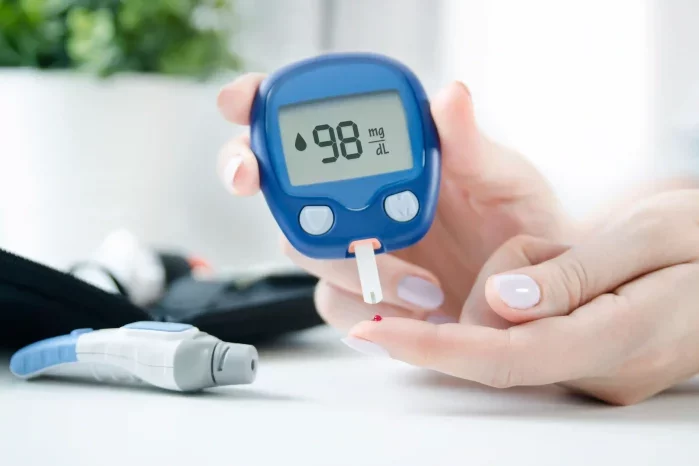Type 1 diabetes is a condition characterized by the body’s inability to produce insulin, necessitating lifelong management through insulin therapy and lifestyle adjustments. One of the primary challenges in managing Type 1 diabetes is maintaining blood glucose levels within a target range. When blood glucose levels become excessively high, a condition known as hyperglycemia occurs. Recognizing the signs of hyperglycemia is crucial for effective management and prevention of complications. This article provides an in-depth examination of the signs of too much sugar, its causes, consequences, and strategies for management and prevention.
Understanding Hyperglycemia
What is Hyperglycemia?
Hyperglycemia refers to elevated blood glucose levels. In individuals with Type 1 diabetes, hyperglycemia occurs when there is insufficient insulin to facilitate glucose uptake into cells, resulting in an accumulation of glucose in the bloodstream.
Causes of Hyperglycemia
Hyperglycemia in Type 1 diabetes can be caused by various factors, including:
- Insufficient insulin dosing or missed insulin injections
- Insulin resistance
- Excessive carbohydrate intake
- Stress or illness
- Hormonal fluctuations (e.g., during puberty)
- Inadequate physical activity
- Errors in insulin administration or absorption
The Importance of Managing Blood Sugar
Proper management of blood glucose levels is essential for preventing both short-term and long-term complications associated with Type 1 diabetes. Persistent hyperglycemia can lead to acute complications such as diabetic ketoacidosis (DKA) and chronic complications including cardiovascular disease, neuropathy, and nephropathy.
Signs and Symptoms of Hyperglycemia
Early Signs of Elevated Blood Glucose
Increased Thirst (Polydipsia): High blood glucose levels cause the body to lose more water through urine, leading to dehydration. This prompts an increased thirst as the body attempts to replenish lost fluids.
Frequent Urination (Polyuria): Excess glucose in the blood spills into the urine, causing increased urine production and more frequent trips to the bathroom.
Fatigue: Elevated blood glucose levels can impair the body’s ability to use glucose for energy, leading to feelings of fatigue and weakness.
Blurred Vision: High blood glucose can cause fluid to shift into the eye’s lens, affecting the ability to focus and resulting in blurred vision.
Headaches: Dehydration and imbalances in blood glucose levels can trigger headaches.
Advanced Symptoms of Hyperglycemia
Unexplained Weight Loss: When the body is unable to use glucose properly, it may start breaking down fat and muscle for energy, leading to weight loss.
Nausea and Vomiting: Elevated glucose levels can lead to nausea and, in severe cases, vomiting, particularly if accompanied by diabetic ketoacidosis.
Dry Mouth and Skin: Dehydration from excessive urination can cause the mouth and skin to become dry and less elastic.
Rapid Breathing: In cases of diabetic ketoacidosis, rapid, deep breathing (Kussmaul respirations) may occur as the body attempts to compensate for the acidotic state.
Fruity-Scented Breath: This is a specific sign of diabetic ketoacidosis, where the breath may have a fruity odor due to the presence of ketones.
Severe Hyperglycemia Symptoms
Confusion or Difficulty Concentrating: Extremely high blood glucose levels can impair cognitive function, leading to confusion and difficulty focusing.
Loss of Consciousness: In severe cases of hyperglycemia, particularly with ketoacidosis, unconsciousness or coma may occur.
Severe Abdominal Pain: This is often associated with diabetic ketoacidosis and can be accompanied by nausea and vomiting.
Diagnosing Hyperglycemia
Monitoring Blood Glucose Levels
Regular monitoring of blood glucose levels is essential for detecting hyperglycemia. Patients with Type 1 diabetes typically use glucose meters or continuous glucose monitors (CGMs) to track their blood glucose levels.
Laboratory Tests
In addition to home monitoring, laboratory tests such as hemoglobin A1c (HbA1c) can provide information about average blood glucose levels over the past 2-3 months. High HbA1c levels indicate poor long-term glucose control.
Urinalysis
Urinalysis can detect the presence of glucose and ketones in the urine, which are indicative of hyperglycemia and potential diabetic ketoacidosis.
Management of Hyperglycemia
Adjusting Insulin Therapy
One of the primary strategies for managing hyperglycemia is adjusting insulin therapy. This may involve:
- Increasing insulin dosages as needed
- Administering insulin at different times or using different types of insulin
- Using insulin pumps for more precise control
Dietary Adjustments
Managing carbohydrate intake is crucial for blood glucose control. Patients should:
- Monitor carbohydrate consumption
- Choose foods with a low glycemic index
- Balance meals with proteins and healthy fats
Physical Activity
Regular physical activity helps improve insulin sensitivity and glucose uptake. Patients should engage in a consistent exercise routine, but adjustments may be necessary if exercise affects blood glucose levels.
Hydration
Maintaining adequate hydration helps prevent dehydration associated with hyperglycemia. Patients should drink plenty of water throughout the day.
Stress Management
Stress can impact blood glucose levels, so incorporating stress-reducing techniques such as relaxation exercises, meditation, and adequate sleep is beneficial.
Prevention of Hyperglycemia
Consistent Monitoring
Regular monitoring of blood glucose levels helps identify trends and prevent hyperglycemic episodes. Patients should follow their monitoring schedule and make adjustments based on their readings.
Education and Awareness
Education about the signs of hyperglycemia, proper insulin administration, and lifestyle management is essential. Patients should work closely with their healthcare team to understand their condition and treatment options.
Regular Follow-Ups
Regular check-ups with healthcare providers help ensure that diabetes management strategies are effective and allow for timely adjustments to treatment plans.
Emergency Preparedness
Patients should be aware of the signs of severe hyperglycemia and know how to respond. This includes recognizing symptoms of diabetic ketoacidosis and knowing when to seek medical attention.
Complications of Untreated Hyperglycemia
Diabetic Ketoacidosis (DKA)
DKA is a serious condition that results from a severe insulin deficiency, leading to high blood glucose levels, ketone production, and metabolic acidosis. It can cause nausea, vomiting, abdominal pain, and potentially lead to coma or death if not treated promptly.
Long-Term Complications
Chronic hyperglycemia can lead to complications such as:
- Cardiovascular disease
- Neuropathy (nerve damage)
- Retinopathy (eye damage)
- Nephropathy (kidney damage)
- Poor wound healing and increased risk of infections
See also: What Tests Confirm Type 1 Diabetes?
Conclusion
Recognizing and managing the signs of too much sugar is crucial for individuals with Type 1 diabetes. By understanding the early and advanced symptoms of hyperglycemia, patients can take proactive steps to manage their blood glucose levels effectively. Regular monitoring, medication adjustments, dietary and lifestyle modifications, and stress management are key strategies for preventing and controlling hyperglycemia. Through education, vigilance, and collaboration with healthcare providers, individuals with Type 1 diabetes can achieve better glycemic control and reduce the risk of complications.
Related topics:
What Happens to Type 1 Diabetes Without Insulin?


























